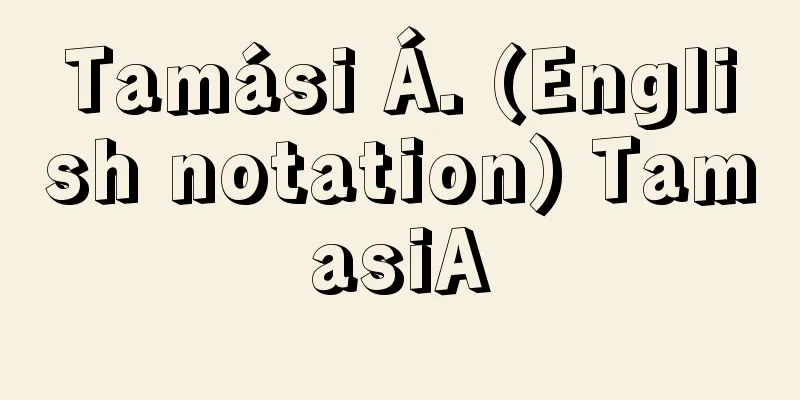Bamboo crafts

|
Bamboo crafts are bamboo products made by cutting bamboo horizontally, splitting it vertically, and then shaving it into strips (lottery strips) that are then braided or woven. Japan is blessed with a rich supply of high-quality bamboo, and since ancient times, flexible, sturdy, and elegant bamboo products have been developed into a variety of daily necessities, weapons, agricultural tools, and fishing equipment. In the 17th century, specialized bamboo craftsmen (bamboo craftsmen) emerged who made baskets, kago tying baskets, and sieves. The defining feature of bamboo crafts is the weaving. The basic weaving methods are Mitsume and Yotsume, and there are dozens of commonly used weaving methods, including Basket Weave, Ajiro Weave, Rokutsume, Ishidatami, Asanoha, Rope Weave, Kumosuba, Matsuba, Seikai, Tetsusen, Koori Weave, Tsumame, Senjo Weave, and Kasuri. Since bamboo has the inherent tendency to split and break, the craftsmen (artists) themselves carefully select good bamboo for the weaving materials, and cut and peel it into thin, long strips. Tools used in bamboo crafts include a string saw for cutting the bamboo, a bamboo splitting hatchet and knife for splitting it, a cutting knife and bamboo sharpening stand for shaving it, and a mousetooth awl, four-eye awl, and three-eye awl for drilling holes. If we break down bamboo into the components that make up a product, there are three types: tate (material that forms the bones of the bottom and sides), hen (material used for weaving), and heri (material used to roll up the edges). All of these are made by peeling off the outer skin of the bamboo thinly. Craft artists use carefully selected bamboo depending on the intended use, but bamboo crafts as local folk tools are made using locally produced bamboo, resulting in local, ethnic crafts. Some of the main bamboo craft production areas and products include: Nemagari bamboo crafts (chairs, baskets, and suitcases) from Ninohe, Iwate Prefecture; bamboo bark crafts (bread baskets and serving dishes) from Takasaki, Gunma Prefecture; fishing rod crafts from Kawaguchi, Saitama Prefecture; bamboo length measurers from Odawara, Kanagawa Prefecture; Suruga bamboo senjiki crafts from Shizuoka Prefecture; tea scoops and Takayama tea whisks from Nara Prefecture; "Kuyachara-awari" crafts from Matsuyama, Ehime Prefecture; and bamboo crafts woven from degreased flat strips from Beppu, Oita Prefecture. [Mitsuo Akiyama] [Reference] | | |Beppu City Bamboo Crafts Traditional Industry Hall Exhibition © Tourism Oita Public Interest Incorporated Association Beppu Bamboo Crafts ©Oita Tourism Association "> Beppu bamboo craft weaving process Source: Shogakukan Encyclopedia Nipponica About Encyclopedia Nipponica Information | Legend |
|
竹細工とは、竹を横にひいたり、何本かに縦に割ったり、さらに細かく削ってひご(籤)としたもので、組んだり編んだりした竹製品のことをいう。わが国は良質の竹の産地に恵まれているため、原始のころから柔軟にして堅牢(けんろう)、かつ優雅な竹製品が、いろいろな生活用具として、あるいは武器、農具、漁具として発展してきた。17世紀には、籠(かご)編、籠結、笊(ざる)編とよばれる竹細工の専門職人(竹細工師)が生まれた。 竹細工の特徴は、なんといってもその編組みにある。編み方の基本は三つ目と四つ目で、通常用いられている編み方だけでも、笊編、網代(あじろ)編、六つ目、石畳、麻の葉、縄編、蜘蛛(くも)巣、松葉、青海、鉄線、氷裂編、束編、千条編、編絣(かすり)など数十種類のものがあげられる。なお竹には、割れる・折れるという素材自身の宿命的な性質があるので、編組みの材料は、職人(作家)が自らよい竹を吟味して、切出しで薄く長く剥(は)いでつくっていく。竹細工の工具には、竹をひく弦(つる)掛け鋸(のこ)と、割るための竹割り鉈(なた)・小刀、削る切出し小刀・竹削り台、穴をあける鼠歯錐(ねずみはきり)・四つ目錐・三つ目錐などがある。 竹材を、製品を構成する部分に分けてみると、タテ(底部・側面の骨になる材料)、ヘン(編み上げていく材料)、ヘリ(縁を巻き上げる材料)の3種になる。いずれも竹の外皮のほうをおもに薄く剥いで使用する。工芸作家などの場合は、その使用目的に従って、竹材を厳選して用いているが、地方の民具としての竹細工は、その土地に生産する竹材を利用し地域性のある、民族的な細工物がつくられている。 おもな竹細工の産地と製品には、次のようなものがあげられる。岩手県二戸(にのへ)の根曲(ねまがり)竹細工(椅子(いす)・籠(かご)・行李(こうり))。群馬県高崎の竹皮細工(パン籠・盛(もり)器)。埼玉県川口の釣竿(つりざお)細工。神奈川県小田原の竹長さ計り。静岡県の駿河(するが)竹千筋細工。奈良県の茶杓(ちゃしゃく)、高山茶筅(ちゃせん)。愛媛県松山の「くやちゃら編」細工。大分県別府の、油抜きをした平ひごで編み上げた竹細工。 [秋山光男] [参照項目] | | |別府市竹細工伝統産業会館展示©公益社団法人ツーリズムおおいた"> 別府竹細工 ©公益社団法人ツーリズムおおいた"> 別府竹細工の編組み作業 出典 小学館 日本大百科全書(ニッポニカ)日本大百科全書(ニッポニカ)について 情報 | 凡例 |
Recommend
Ubaid - Ubaid (English spelling) al-Ubaid
A standard site of the Ubaid period in the desert...
Intellectual
〘 noun 〙 (abbreviation of "intelligentsia&quo...
Counter-transference
… In psychoanalytic therapy, the therapist is req...
Fetal position - Taii (English spelling) Presentation
This refers to the position of the fetus within t...
Katada Mikuriya
...The name of the sea people who mainly engaged ...
Lamé, G. (English spelling) LameG
… In an isotropic elastic body, Young's modul...
Karajishi - Karashishi
〘Noun〙 (also "karashishi")① Lion. Shishi...
Unsere Liebe Frau (English)
...) and is rarely called Maria. In the West, esp...
Strughold, H.
For example, there was an experiment conducted at...
Cryptanthus zonatus (English spelling) Cryptanthuszonatus
… [Takabayashi Masatoshi]. … *Some of the termino...
Introduction to Dogmatics - kyogigakujoron
…a branch of Catholic theology. It is a field tha...
Shunyodo
A publishing company founded in 1878 by Wada Atsut...
Reed pipe
...The koto is placed on a low, four-legged stand...
Nurhaci (English spelling)
1559‐1626 The first emperor of the Qing Dynasty in...
Theory of the All-People's State - Zenjinminkokkaron
This is a theory of the state proposed in the Sovi...









